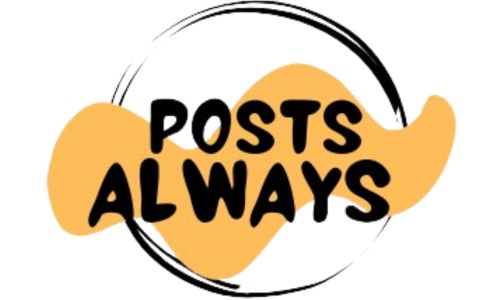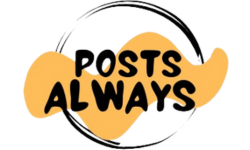Boston College Dance Theater, Boston, MA.
January 18, 2025 (seen just about).
A large smile, an expansive attain, a sassy shoulder roll. These might be small elements in a recipe for pure, vivacious pleasure. The world on the market might be unpredictable and exhausting – and the enjoyment in dance artwork is usually a true balm. There’s a purpose why this sort of work resonates from the Broadway stage to TikTok and much past.
Additionally included have been Catherine Shortliffe’s March, March (a memorable 2021 dance movie standing as an activist assertion in these politically turbulent instances), the extremely expressive and emotive movie change(d) me (a premiere from Melissa DeFriesse, stuffed with intelligent instruments in rhythm, staging and cinematography – from Andres Calderon / dresticHaus), Lizzy Thaman’s Physique Language (a sultry, jazzy work of cohesive design and girls standing absolutely in ferocity), and Austen Starr’s Centerfield (a cleverly-executed 2019 faucet piece conceptualizing baseball in live performance dance).
Per traditional with OnStage video shows, different brief video clips offered home windows into the method of making these works in addition to underscoring the values that drive all that they do. Additionally as all the time, the work concluded with a finale presenting additional possibilities for these artists to take pleasure in highlight and be in shifting neighborhood. It couldn’t have been clearer how that connection, in addition to the enjoyment to which it’s inextricably linked, actually issues.
The primary piece, OnStage Director Jennifer Kuhnberg’s Darkish Facet, opened with Disney villains in pantomimed dialog, together with Cruella DeVille, Maleficent, Ursula and (extra within the traditional Hollywood canon) the Depraved Witch of the West. It’s an intriguing thought on this time of reconceptualizing these tales and characters to grasp deeper psychological complexities.
By sharp accent, sturdy gaze, and stellar theatricality, the dancers delivered sass and spirit aligned with that villian angle. The rating (Neoni’s “DARKSIDE”) additional enhanced these qualities – and thus the daring, rebellious ambiance within the ether.
Adi Wollny’s The place They From was a enjoyable and vibrant hip hop dance. There was a wholesomeness on supply from the comfortable, cool colours within the design aesthetic in addition to the pure blast the dancers appeared to be having.
Somewhat than velocity and accent, as is usually the main focus on this fashion, clean circulate and top-rock predominated. That’s a rising method within the fashion, and one producing some actually commendable work. General, the piece was a really welcome reminder that generally a big group of dancers dancing joyfully to energetic music is all we have to smile and really feel lighter.
Sara Kirubi’s Don’t Cease Me Now stuffed the stage with but extra vibrancy and pure rhythmic pleasure – this time via faucet dance to Queen’s tune of the identical identify. Kirubi created pleasing incorporation of gesture into faucet dance vocabulary, not for its personal sake however to raise the dance celebration really feel at hand. The ensemble shined as brightly because the silver sparkles of their costumes.
Shortliffe’s Rewind/Rebound moved us right into a a lot completely different really feel: somber, even haunting, via the rating’s ethereal voice and lack of direct eye contact because the dancers navigated house with and round one another. But a way of company grew because the rating constructed and dancers explored extra of house via locomotion and reaching gesture.
They discovered extra concord in direction of the top as they circled one another, shoulders related. Their rhythmic rise and fall was satisfying, even calming. To finish, as they walked in a big circle, it appeared they’d lastly actually seen one another. May that have been the ultimate key to hope, to connection, to optimistic change?
Mykala Cohen’s United in Grief introduced the daring and recent method of up to date dance to a hip-hop rating. It rode the musical nuances – each accent and riff – such that the chance appeared to work out. The motion colorfully intersected with numerous layers and moods within the rating, from piano to rap verses.
Maybe it was much less modern dance to a hip hop rating than aligned with the postmodern pattern of stylistic eclectism (“something goes”) and the style of hip hop theater – the place laudable work is going on on a regular basis. Perhaps there may be hope and pleasure within the availability of these potentialities alone.
Danielle Doody’s Crawling introduced angsty and fierce modern. The presence of each serpentine and angular patterns conveyed a gathering of energy and fluidity, adaptability. The staging moved quick, contributing to the dynamic really feel at hand – but was cleanly created and executed sufficient to stay legible. Even in that angsty really feel, one and not using a true ending decision, there was consolation within the ensemble’s energy alone; they weren’t taking something mendacity down.
Tyla Tognarelli’s Who Am I to You? contributed modern styling of a softer kind, however with its personal craving and unease. It was one other massive group work with multifaceted patterns, executed with precision. Spines shifted in direction of and away from an reverse clump of dancers, then circled – after which the entire sample repeated. That felt like a poignant bodily expression of the tensions and indecisions find human connection.
Emily Chang’s Instruction was a theatrical celebration of a chunk. It started with a mixture tape (keep in mind these?) of shortly switching tracks as a couple of dancers casually moved in pajamas. That transitioned into enjoyable, sassy motion in what might be Catholic faculty uniforms, with the ensemble lit in a fiery crimson (lighting design by Stephanie Howell).
The motion blended and smoothed out, like in a well-mixed batter, punctuated angles and clean round shapes. Hips rolled, toes moved, and chests popped via all of it. General it was a transparent image of a positive factor historical past has proven us: in any surroundings, youth will hunt down daring music, free motion, and no matter is tenaciously novel.
Kuhnberg’s RAIN exhibited a nostalgia and sweetness that merely labored on me. Lifts in highlight, silver-sparkled costumes, and a traditional pop rating virtually mirrored Soiled Dancing – in a manner that didn’t really feel low cost or saccharine. The comfortable, but supported motion high quality had the identical resonance. It virtually felt like competitors lyrical, however with deal extra maturity and depth. Even because the rating spoke of clear challenges, pleasure and ease rippled from the dancers’ pure smiles to their clean port de bras.
Lexine Brooks’ Black and Gold additionally introduced a sure form of satisfying nostalgia, however with the aesthetic a bit extra fiery and flashy. It made me smile to see traditional jazz dance vocabulary, which appears all-too-rare lately. There was even a Fosse-esque high quality of energy, intrigue, and sass via the smallest isolation, via rhythmic snaps and passés.
It translated as an Exhibit A that dance doesn’t need to be massively athletic to captivate. Somewhat, this work completed that via an aesthetic and tastefully sultry high quality – like Hollywood and Broadway of previous, with its personal form of bliss.
Erica Thorp’s I’m Each Girl paired muscular but silky motion with the enduring monitor from Whitney Houston and Chaka Khan (speak about traditional!). Carrying crimson pantsuits, they danced kinetically considerate modern jazz. There appeared to be so many potentialities at hand in styling and staging – and Thorp capitalized on them. It virtually felt like a postmodern model of the joyful femininity of the final piece; embracing any degree of energy or tenderness, if truthful to oneself, is simply nice.
Why shouldn’t the total bounty of these potentialities be accessible to us? This author has no solutions there. Quite the opposite, after viewing this efficiency, I’m much more keenly conscious of the enjoyment that such alternatives engender – and thus their singular, and very important, impression. Thanks for displaying us the best way, OnStage Dance Firm!
By Kathryn Boland of Dance Informa.



